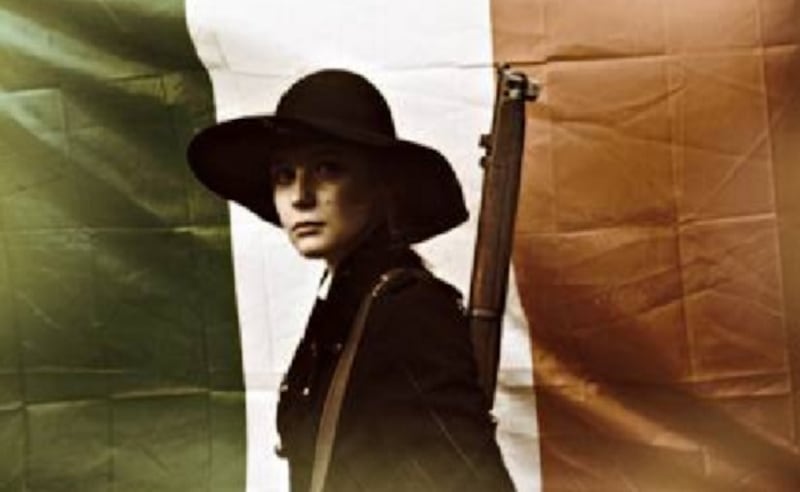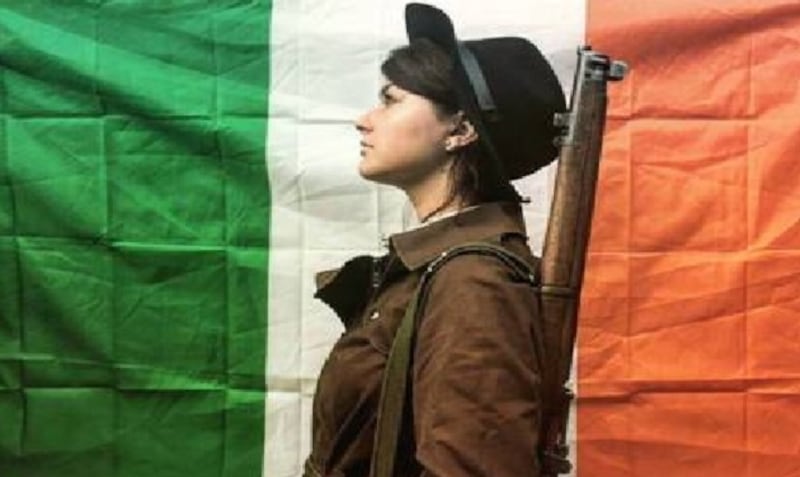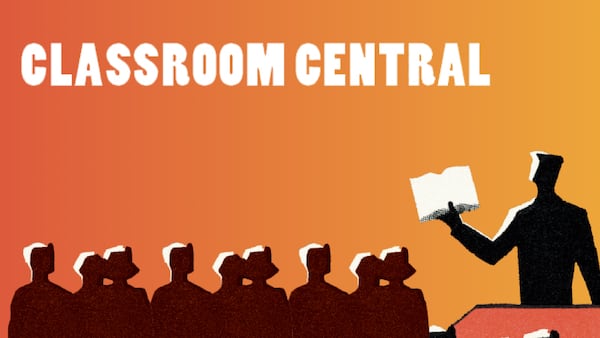A group of young students, two of whom were born in Poland and Romania, dressed in Cumann na mBan uniforms and celebrated the lives of the women of 1916 during a recent event in Dunshaughlin Community College in Co Meath.
Roberta Ieremie, Natalia Majczak and Alanna Bradley wanted to demonstrate the role played by Cumann na mBan in the Easter Rising.
Dressed in uniforms resembling the Cumann na mBan uniform, the girls who are all in 5th year, said they wanted to bring back to life what it meant to live during the 1916 Rising.


“We did it because we wanted people to remember the women during the 1916 Rising (by bringing) it to life” said Roberta.
By reliving scenes from the past, the girls raised awareness of Cumann na mBan and the important role played by women during Easter Rising.
The girls wanted to create a visual experience that would interest their fellow students, Roberta Ieremie explained.
“As history students we understand that 1916 can be quite dull and a lot to learn but we wanted to make it fun for those who don't (study) history.”
The project was also very important to the girls, of whom two are of east European origin.
Natalia Majczak, who was born in Poland explains, “I didn't grow up learning Irish history and therefore by re-enacting 1916 it made me understand the history and where (it) came from.”
“It made it very clear for me and you respect it even more. I’m very glad to have done it.
“We weren't born here, we've lived all our lives here but I'm so interested in it”, she said.
“It's not our history but through this it kind of made it real. It kind of made us part of the history but in the present” says Roberta Ieremie, who was born in Romania.
“I would 110 per cent count myself Irish, we are Irish citizens, ‘we march for freedom!’”
The 1916 project is something very close to the young students who are fascinated by the events of the time.
“I think 1916 represents the people who would not usually have been involved. The leaders were poets, teachers, they weren't military men,” Alanna said
“Despite the fact that they didn't have a military background they took up arms and fought for what they believed in. We got a sense of that by re-enacting it and immersing ourselves in the history by doing the video and gathering information about it,” she added.
Natalia gives her thoughts, “to me I think it helped changed the opinion of the Irish people because the Irish citizens at that time didn't know what they were fighting for until after the rebel (leaders) were killed. People started to realise that is what the Irish are, we fight for what we want.”
Alanna explains, “Despite not achieving what exactly they had set out it still set off a chain of events that would eventually get us the republic we have today. For example the Anglo-Irish Treaty, the War of Independence, the Civil War. All of those events would not have happened, were it not for the 1916 rising.”
Furthermore, Roberta explains how the 1916 Rising helped form how the Irish are viewed throughout the world.
“People around the world know that Irish people are known for their pride that we have because we got what we (fought for).”
In order for the girls to get into the spirit of 1916 life they dug through their wardrobes to find the best impersonation of women soldiers from the 20th century.
“We did a bit of research on what women wore back then and noticed that they all wore trench coats with loads of pockets. Lucky enough we all had trench coats! We dug out some long skirts from the back of our wardrobes and our own stylish fedora hats that everyone is still wearing now.
“We even got a gun off one of our friends! He has a licensed gun and was able to get it disarmed. We worked with what we had and it all fell into place”, Roberta said.
Commenting on events such as the Proclamation Day when all primary and post-primary schools held activities to remember 1916, Alanna said, “to get people interested you have to go beyond the textbooks, you have to do stuff to make them involved, like the flag raising in our school.”
The young girls stood by as former Meath GAA manager Sean Boylan, whose father General Sean Boylan was a leader in the independence movement, raised the tricolour in front of Dunshaughlin Community College.
Gen Boylan joined the IRB in 1913 and was interned in Wales at the Frongoch military camp following the 1916 Rising.
As Mr Boylan raised the tricolour Alanna Bradley read the proclamation in front of the school.
Turlough Malone sang Amhrán na bhFiann as the flag was raised.
“We stood there dressed like Cumann na mBan with our guns, it was pretty amazing,” said Alanna Bradley.











